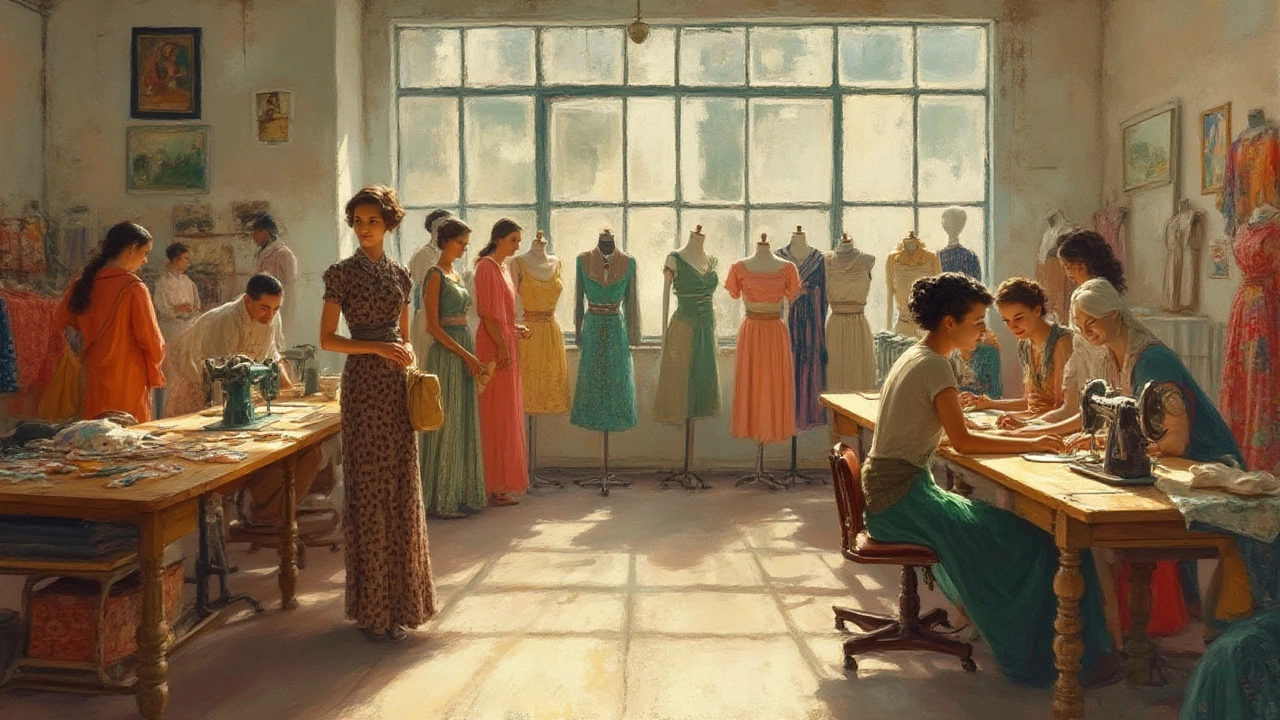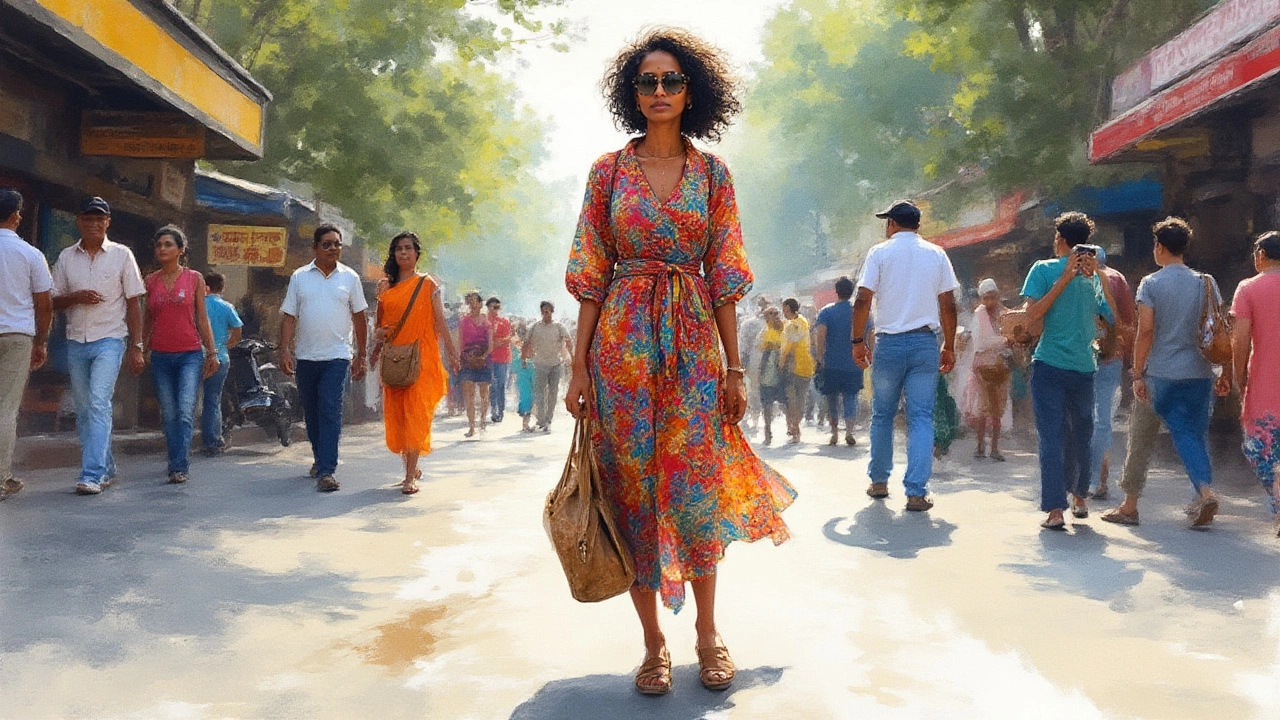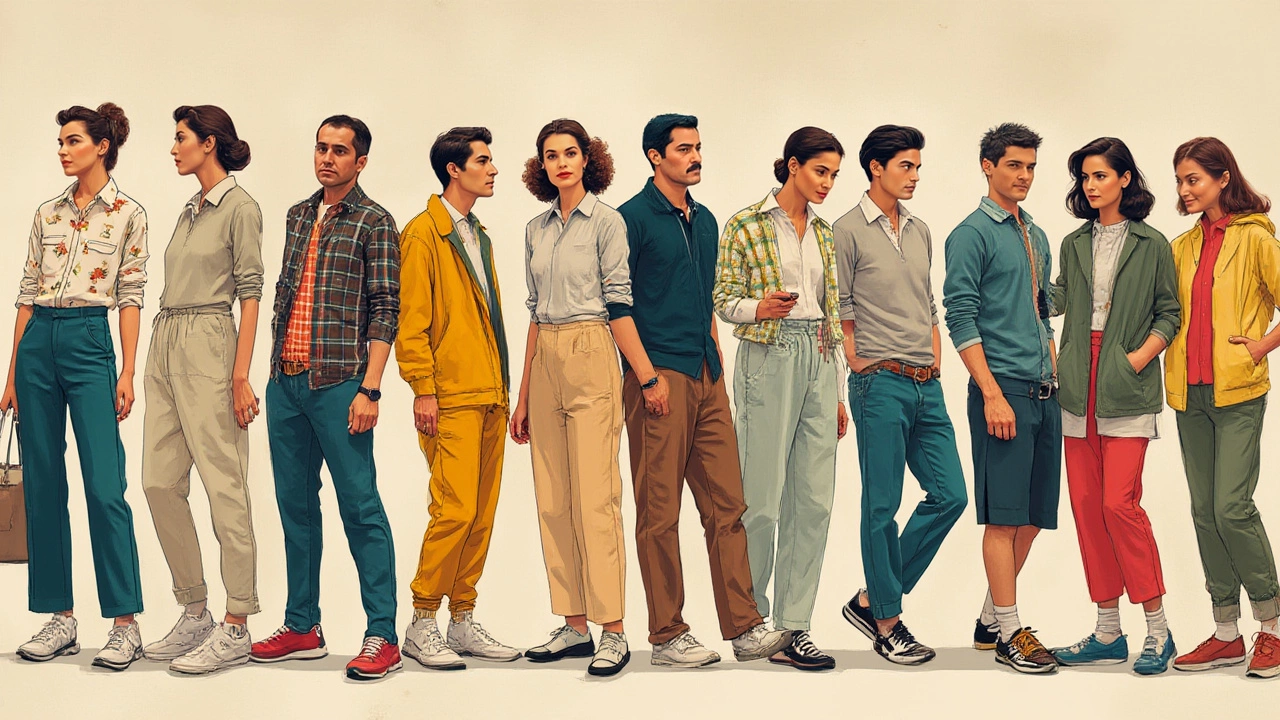The Trailblazers Behind American Sportswear: Fashion Innovators Who Changed the Game

Before American sportswear became a household phrase, a woman trying to look stylish on a budget had one big headache: formalwear everywhere, stiff European-inspired silhouettes, and a practical void in her day-to-day wardrobe. What would you wear to a picnic in Central Park, a roadtrip down Route 66 or just running errands in the city? For a while, the answer was: awkward suits, impractical dresses, or whatever passed as “sensible” wear. But then, American sportswear appeared—and it turned the whole idea of practicality and effortless style on its head.
People often think of sweatpants, hoodies, and gym shorts when they hear "sportswear" today, but the real roots go much deeper. American sportswear began as an answer to what women—then men—really wanted: clothing that was easy to mix and match, comfortable, and, most of all, made you look like you belonged wherever you went. Even now, if you open your closet and grab a crisp white tee or a simple cotton dress, you’re pulling on a thread that goes back generations.
The Real Beginnings: From Utility to Chic
We can blame (or thank) the Great Depression and World War II for the urgency behind American sportswear. Fabric was limited—people started getting creative. Clothing had to be reused, altered, and adapted. Enter a fresh breed of designers who saw opportunity where others saw obstacles. In the 1930s, young women needed smart outfits for work and weekends, which meant goodbye, fussy tailoring, and hello, clean lines. This shift was as much about practicality as it was about breaking the mold of what women were expected to wear.
It’s almost impossible to talk about the start of American sportswear without mentioning department stores. Unlike European fashion houses that catered to the elite, stores in New York and Chicago took pride in affordable, ready-to-wear collections. Designers weren’t faceless—they became household names. These stores pushed for American-made clothes, spotlighting designers who cut their teeth in the bustling garment districts. Soon, cities from Philadelphia to Los Angeles had their own stylish, easy-to-wear scene. And they weren’t just copying Paris—they were inventing something new, piece by piece.
Claire McCardell: Fashion’s Unlikely Revolutionary
If there’s a single face you should picture when you think of American sportswear’s roots, it has to be Claire McCardell. In the late 1930s and especially through the 1940s, McCardell revolutionized how American women dressed—forever. She wasn’t trying to make some radical feminist statement, yet she did something quietly subversive: She put comfort, movement, and practicality first, all while keeping a playful style. Imagine a dress you don’t have to dry clean… one you can ride a bike or climb stairs in. That was groundbreaking at the time.
Her “Monastic” dress (1938) was a revelation—adjustable, comfortable, and forgiving, perfect for every figure. Then came the “popover dress” in 1942, a denim wraparound you could wear just about anywhere—for cooking, gardening, or going out for dinner with a funky necklace. It sold over 75,000 units right out the gate. Claire McCardell didn’t care for corsets, underwires, or ornate fastenings. She said yes to giant pockets, easy zippers, and even ballet flats, which she promoted years before the rest of fashion caught on. She liked rope belts and self-fabric sashes—details the average woman could afford or make herself. McCardell didn’t just change fashion; she democratized it. Even now, designers from Michael Kors to Tory Burch cite her as a guiding star.
| Key Year | Milestone in American Sportswear | Innovator |
|---|---|---|
| 1938 | Monastic Dress debut | Claire McCardell |
| 1942 | Popover Dress launches | Claire McCardell |
| 1947 | First mass-market separates collections | Calvin Klein |
| 1967 | Polo Shirt popularized in the mainstream | Ralph Lauren |

The Rise of the Greats: Other Names Who Shaped Sportswear
Claire wasn’t working in a vacuum. She was just one in a constellation of designers who redefined American style. Bonnie Cashin is worth a whole spotlight of her own. If you’ve ever coveted that slouchy leather tote or that easy suede jacket, Cashin’s fingerprints are all over it. She believed that busy women (like herself) didn’t want fussy clothes. They wanted layers, pockets, manageable fabrics, and lasting design. She worked for Coach, turned simple toggles into a fashion statement, and made practical chic actually stylish.
Norman Norell dared to blend day and evening looks, something no self-respecting Parisian couturier would have attempted in the ‘40s. Norell pioneered clean-cut jackets, blouses, and skirts that you could transform with a quick accessory swap. Then you had Anne Klein, who took the baton in the ‘60s and made modular dressing—matching blazers, pants, and skirts—a standard for career women. Ralph Lauren nabbed the preppy side of sportswear, created an empire out of polo shirts and khaki everything. Bill Blass injected American sass into classic tailoring. Tommy Hilfiger gave sportswear a pop-culture jolt. At each turn, sportswear reflected real lives: going to work, picking up groceries, vacationing, lounging, and everything in between. American sportswear gave options that made sense beyond the runway or the red carpet.
How American Sportswear Changed Fashion Forever
This isn’t just about clever designers sketching in Midtown offices—the rise of American sportswear is about a fundamental shift in what fashion is supposed to do. In the old days, designers told people what was beautiful and proper. American sportswear listened first—what do people need, and how can style make life easier and a lot more fun? Suddenly, baseball jackets—first invented to keep athletes warm—showed up on runways. The white cotton tee left the gym and went to college classes and clubs. Denim switched sides, from being seen as dirty workwear to an essential in everybody’s closet.
These pieces weren’t just easy to wear—they reflected the spirit of the times: fast, accessible, democratic, mixing fun and practicality. The mix-and-match approach let anyone play stylist in their own bedroom. People discovered they could invest in a few solid basics, rotate them, and get a whole new look each week. This formula is still a gold standard for anyone who hates morning wardrobe anxiety. And don’t forget this—many of these breakthroughs came from a time when women couldn’t even get their own credit cards but could still claim new freedom through what they wore. American sportswear wasn’t just about looks; it was about independence, confidence, and real freedom of movement.

Sportswear Now: Why the Legacy Still Matters
Fast-forward to now, and sportswear is everywhere, blurring the line between what you wear to the gym and what you wear to brunch. But the best of American sportswear still comes down to the core ideas that American sportswear inventors championed: timeless basics, easy fit, comfort, and the creative freedom to mix it all up. Brands keep riffing on that 1940s formula: think leggings and oversized hoodies, but also sleek button-downs, clean chinos, and structured denim jackets. Designers like Tory Burch, Virgil Abloh, and Heron Preston nod to the same blend of utilitarian polish and personal flair that made McCardell and her colleagues legends.
If you’re building a closet from scratch today, start with sportswear classics: a perfect white tee, a soft crewneck sweatshirt, crisp denim, and a versatile wrap dress. American sportswear isn’t just about chill weekends. It’s about those high-low combinations you see all over Instagram—pairing a bomber jacket with a silk skirt, or sneakers with a tailored blazer. The whole trend toward "quiet luxury" owes a lot to the old rules of sportswear: buy fewer things, buy better, and make them work seven different ways.
Shopping smarter means paying attention to fabrics and fit. Look for breathable cottons, smooth linens, weathered denims, and jerseys. If you’re hunting for vintage sportswear, check out thrift stores in older neighborhoods—these places sometimes have early McCardell or Klein pieces hiding between racks of 90s tracksuits. Want to stay on top of trends? Watch what athletes, musicians, and street stylists wear—it all filters down from and into the American sportswear game.